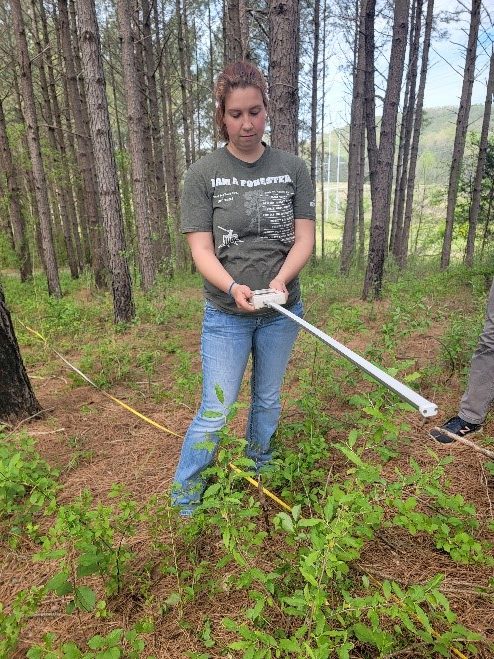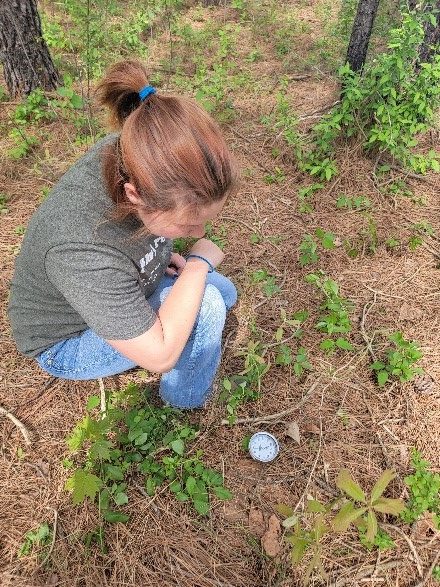Forest ecosystem processes such as growth and decomposition have an important influence on how much atmospheric carbon is captured and stored in forests. Forest management practices that are applied to enhance the goods and ecosystem services provided by Tennessee forests create changes in light levels, temperature, and soil moisture that directly affect forest growth and decomposition. Dr. David Buckley and his M.S. graduate student, Melody Mount, are studying how physical factors like light and temperature change from one area to another within managed forests and relationships between these factors and carbon storage.
Growth and the capture of carbon tend to increase near forest edges where light is more abundant. Decomposition and losses of carbon to the atmosphere may also increase near forest edges when soil temperatures are elevated and soil moisture is abundant, or follow an opposite pattern in which decomposition decreases near forest edges when soil moisture levels are low.
Ms. Mount has been measuring canopy cover, light levels, soil temperature, and soil moisture along transects that cross different types of forest and forest edges. She plans to conduct similar measurements of these factors along transects that cut across uncut forest areas, recently harvested patches, less recently harvested patches, and the edges between them. The data collected will reveal how the ecosystem processes affecting carbon storage change at fine scales over short distances within managed forests, and identify modifications to current management practices that managers and landowners can use to enhance carbon storage in working forests.



